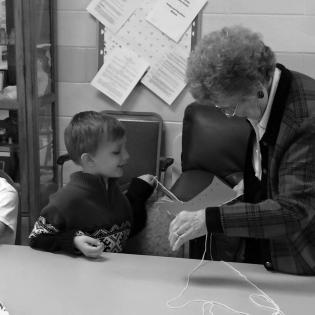Living History-An Intergenerational Philanthropy Project
Children develop sharing and learning relationships with senior friends from a local senior center or retirement home as they volunteer to write the "living history" of that person. Partners from both generations discuss how they have been philanthropists in their lives. The children write, illustrate, and publish their books. This unit involves several field trips to a retirement home and one field trip to a local history museum. This should be arranged in advance and include permissions.
This lesson introduces the "Living History Project." We begin with sensitivity training, as a pre-service reflection and to help volunteers understand possible needs, disabilities, and attitudes of people with whom they will be working. The training leads children to understand the importance of showing respect and grace for their senior friend. The unit provides guidance for the children to learn about philanthropy and to write a book about their senior friend's life.
Young people prepare for their visit to the retirement home by writing an autobiography. They work together to come up with questions to ask their senior friends.
The children write and publish their Living History books, following their interview notes and book format traditions.
This lesson is a celebration to culminate this intergenerational project. The children make a final visit to the senior center or retirement home where all the participants gather for a snack and a farewell celebration. The children read aloud and give their published Living History Books to their senior friends. They debrief the entire project through journal entries.
